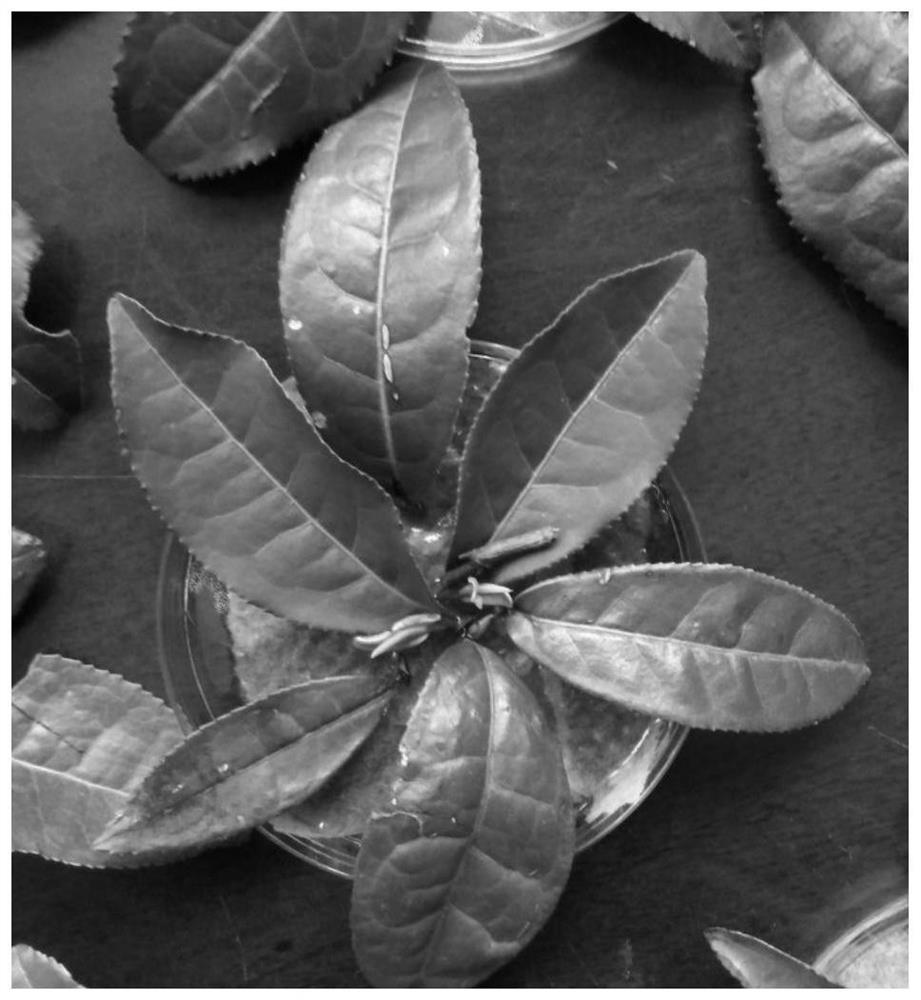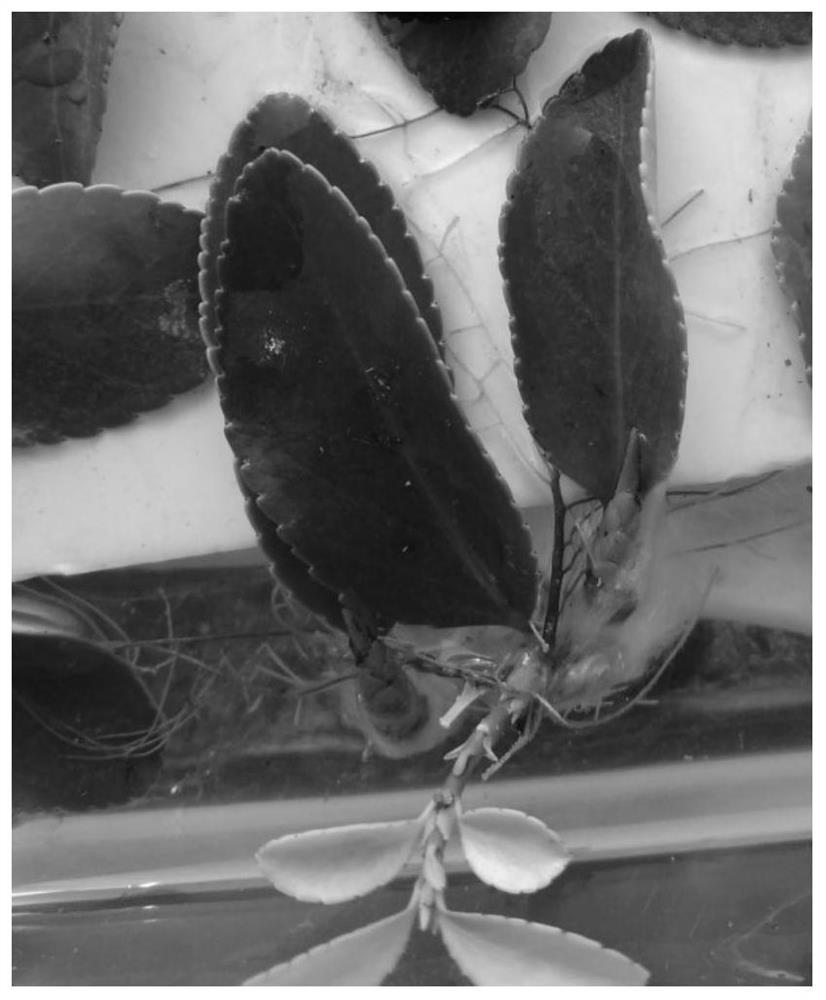Asexual rapid propagation method for dicotyledons
A technology of dicotyledonous plants and leaves, which is applied in the field of asexual rapid propagation of dicotyledonous plants, can solve the problems of different growth periods, inconvenient management, and high cost, and achieve the effects of simplifying the operation process, improving the survival rate, and saving materials
- Summary
- Abstract
- Description
- Claims
- Application Information
AI Technical Summary
Problems solved by technology
Method used
Image
Examples
Embodiment 1
[0038] Embodiment 1 utilizes leaf explant to carry out the rapid propagation of tea tree
[0039] Materials for testing: Xinyang Maojian, a tea tree from Luoshan County, Xinyang, Henan Province, new branches, no pests, semi-woody, full axillary buds, yellow-green with purple hardened branches.
[0040] The rapid propagation of tea tree leaves comprises the following steps:
[0041] 1. Preparation of hydroponic solution and rooting powder solution:
[0042] Hydroponic fluid: boric acid 1.55mg / L, zinc sulfate heptahydrate 2.15mg / L, copper sulfate pentahydrate 0.00625mg / L, manganese sulfate 5.58mg / L, ammonium molybdate tetrahydrate 0.0625mg / L, iron sodium EDTA 0.695 mg / L, calcium nitrate tetrahydrate 236.25mg / L, magnesium sulfate heptahydrate 123.25mg / L, ammonium phosphate 18.65mg / L, pH 6.0. Prepared with sterile distilled water.
[0043] Preparation of rooting powder solution: the solution concentration is 10mL / L. The specific preparation is as follows: 10 mL of rooting powd...
Embodiment 2
[0061] Embodiment 2 utilizes leaf explant to carry out the rapid propagation of peanut
[0062] Test materials: peanut variety 'Yuanza 9102', new seedlings of the year.
[0063] The rapid propagation of peanut leaves comprises the following steps:
[0064] 1. Preparation of hydroponic solution and rooting powder solution:
[0065] Hydroponic fluid: boric acid 1.55mg / L, zinc sulfate heptahydrate 2.15mg / L, copper sulfate pentahydrate 0.00625mg / L, manganese sulfate 5.58mg / L, ammonium molybdate tetrahydrate 0.0625mg / L, iron sodium EDTA 0.695 mg / L, calcium nitrate tetrahydrate 236.25mg / L, magnesium sulfate heptahydrate 123.25mg / L, ammonium phosphate 18.65mg / L, pH 6.0. Prepared with sterile distilled water.
[0066] Preparation of rooting powder solution: the solution concentration is 10mL / L. The specific preparation is as follows: 10 mL of rooting powder liquid (indane-naphthalene acetic acid, 5% soluble solution, registration number: PD20110559, purchased from Sichuan Guoguang...
Embodiment 3
[0080] Embodiment 3 utilizes leaf explant to carry out the rapid propagation of cotton
[0081] Test materials: Cotton variety 'Yinshan No. 7', new branches of the year, no pests, semi-woody, full axillary buds, slightly hardened green branches.
[0082] Cotton leaf rapid multiplication comprises the following steps:
[0083] 1. Preparation of hydroponic solution and rooting powder solution:
[0084] Hydroponic fluid: boric acid 1.55mg / L, zinc sulfate heptahydrate 2.15mg / L, copper sulfate pentahydrate 0.00625mg / L, manganese sulfate 5.58mg / L, ammonium molybdate tetrahydrate 0.0625mg / L, iron sodium EDTA 0.695 mg / L, calcium nitrate tetrahydrate 236.25mg / L, magnesium sulfate heptahydrate 123.25mg / L, ammonium phosphate 18.65mg / L, pH 6.0. Prepared with sterile distilled water.
[0085] Preparation of rooting powder solution: the solution concentration is 10mL / L. The specific preparation is as follows: 10 mL of rooting powder liquid (indane-naphthalene acetic acid, 5% soluble sol...
PUM
 Login to View More
Login to View More Abstract
Description
Claims
Application Information
 Login to View More
Login to View More - R&D
- Intellectual Property
- Life Sciences
- Materials
- Tech Scout
- Unparalleled Data Quality
- Higher Quality Content
- 60% Fewer Hallucinations
Browse by: Latest US Patents, China's latest patents, Technical Efficacy Thesaurus, Application Domain, Technology Topic, Popular Technical Reports.
© 2025 PatSnap. All rights reserved.Legal|Privacy policy|Modern Slavery Act Transparency Statement|Sitemap|About US| Contact US: help@patsnap.com



